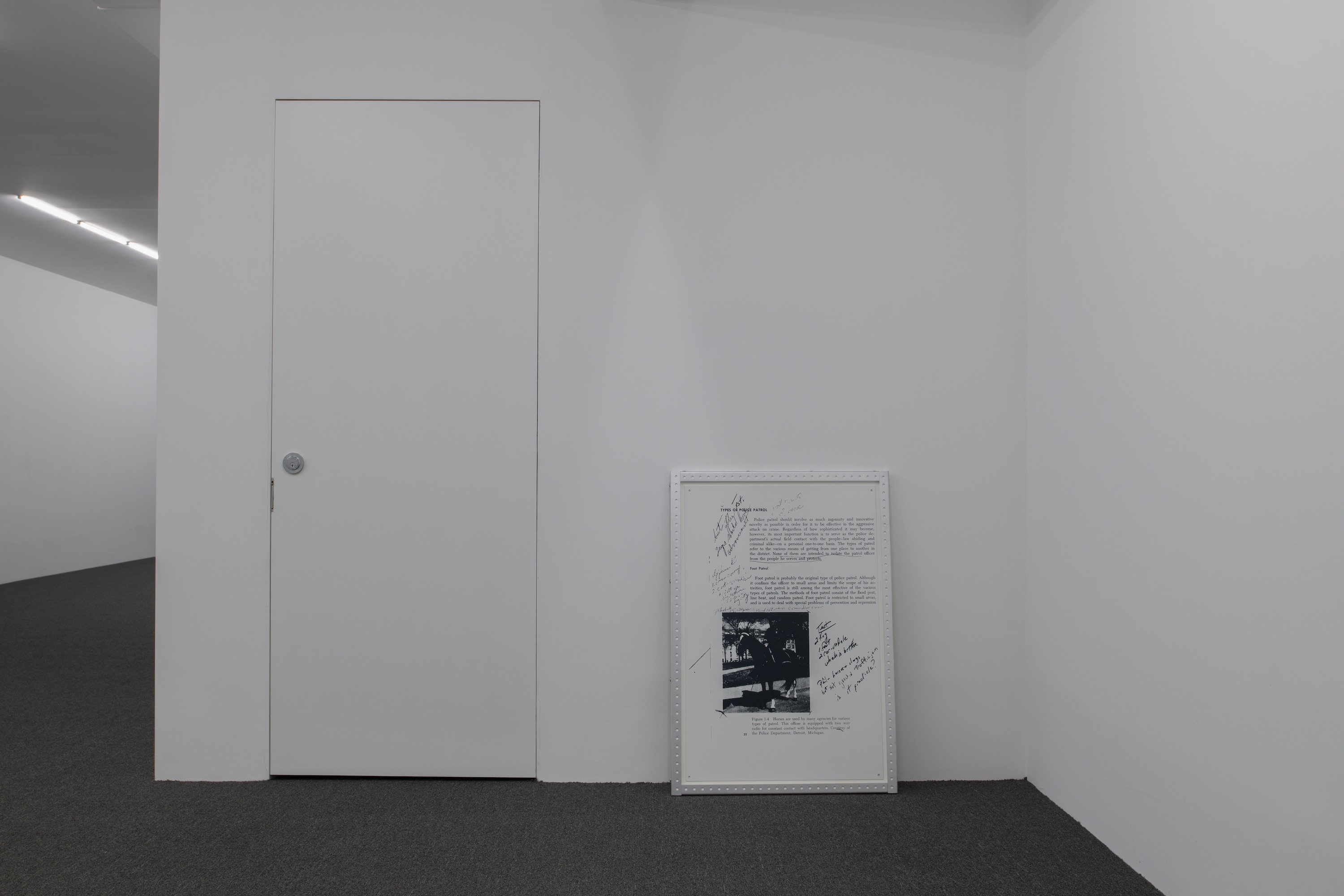In the late 1980s, when borders were collapsing and capital was carving new channels in which to flow, Cady Noland was producing an art of blockages and impediments. She famously made walls of Budweiser beer cans and created barriers with bars, metal pipes, and sculptures resembling stockades. Where movement was signified, it took the form of heavy, clumsy metal walkers and shopping carts that vaguely resembled torture devices. A number of these pieces ominously featured the American flag during a period of US triumphalism and leaching neoliberalism following the collapse of the Soviet Union. At the same time, US prison populations, primarily nonwhite, were skyrocketing—part of what Saidiya Hartman has called the ongoing “afterlife of slavery.”
Noland’s decision to stop making art circa 2000—and her subsequent legal battles over the selling and display of her work when it has been altered or improperly conserved—might be seen as extending her engagement with obstruction and nullification. When there are more things in the world to say no to than yes, it is a sign that the reactionaries are winning. In this sense, Noland’s politics of refusal, in both art and life, feel prescient and valuable. Similarly, while there’s no doubt that Noland could allow a lavish and thorough catalogue or monograph to be published about her work, including her 2019 retrospective at the Museum für Moderne Kunst in Frankfurt, she instead decided to self-publish THE CLIP-ON METHOD, a two-volume, nearly 600-page collection literally split between her own original writings and a selection of sociological essays. The combined volumes also contain approximately 125 images of her work, nearly all in black and white, and some not of exactly the highest quality.
Publications of this sort tend to be secondary to an exhibition, but in typical contrarian fashion, Noland’s recent show at Galerie Buchholz, which featured some of the only new work she has exhibited in the past twenty years, was intended to spotlight the publication, which Noland co-edited with art historian Rhea Anastas. The essays by others that Noland has selected, none of which address her work directly, range from Ethel Spector Person’s “Manipulativeness in Entrepreneurs and Psychopaths” to Michael Korda’s analysis of office furniture as a symbol of power; from Robert Bogdan’s “Freak Shows and Talk Shows” to Leonard Berkowitz and Anthony LePage’s study of the behavioral effects of access to firearms. Nearly all the texts are written by sociologists, and most deal with forms of violence and the psychopathic dimensions to power and celebrity. Neither volume contains a table of contents or index, although there is a list of illustrations at the back of each. Both volumes have been printed relatively inexpensively at 8.5 x 11 inches on standard white paper. (The initial print run quickly sold out at US$65 for both volumes.) The noncommercial quality to Noland’s approach is apparent (grainy black-and-white images and Courier font appear throughout), and any obduracies are in keeping with her practice in general.
“I am interested in the use of barricades and/or suggestive additions to or subtractions from architecture with the intention of highlighting and drawing attention towards one’s usual expectations, or simply with the intention of stirring up frustration,” Noland writes in an untitled artist statement from 1989 included in THE CLIP-ON METHOD. In fact, the handful of her writings consists mostly of statements, work descriptions, and an artist talk, and like much of the work itself, are primarily from the late 1980s and early 1990s. The reproductions of her artwork throughout both volumes might serve as indirect visual annotations to the original and selected texts; for instance, in the middle of this statement appears an untitled work from 1991 that uses Noland’s signature metal tubing to erect a corral for two walkers. The process of being led, and of refusing this command, has been central to Noland’s approach from the start, and it has continued to guide the ways in which she oversees and manages her work. Institutions are gatekeepers, and Noland has sought to dictate—not always successfully—the terms on which her work participates in the art world and its accompanying discourses. Self-publishing and distributing relatively inexpensively the first major “catalogue” on her art is the latest version of this uneasy relation.
THE CLIP-ON METHOD, edited by Rhea Anastas and Cady Noland, was published by Cady Noland, Rhea Anastas, and Robert Snowden in June 2021.
